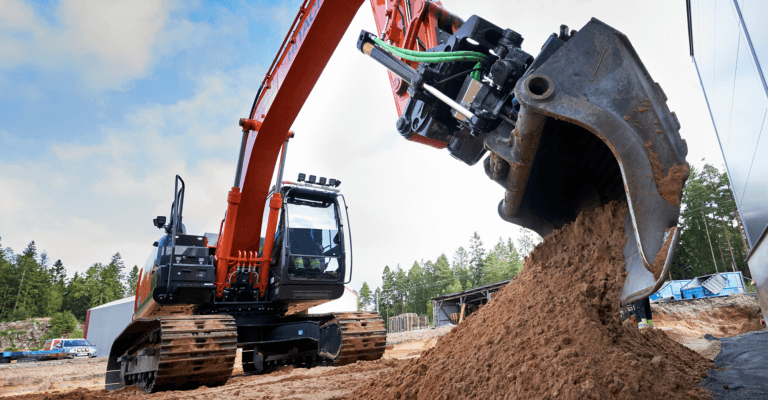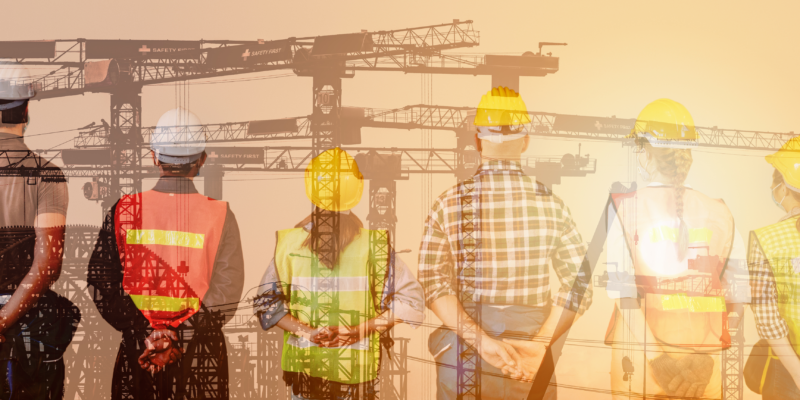If you love construction technology like we do at Steadfast, one of the best things about a new year is the introduction to the newest technologies that are on the horizon.
Our favorite this year: the tiltrotator accessory.
This remarkable piece of equipment is transforming the way construction projects are executed, and offering unparalleled versatility and precision. Let’s talk about what they are, how they work, and the profound impact they’re having on the industry.
First, what are tiltrotator accessories?
A tiltrotator is a hydraulic attachment mounted to the end of an excavator or backhoe arm. It’s made up of two main components: a tilting mechanism and a rotating mechanism. The tilting mechanism allows the attached tool, such as a bucket or grapple, to tilt sideways, while the rotating mechanism lets the tool rotate 360°.
How do they work?
Tiltrotator accessories are controlled via the excavator’s hydraulic system, allowing operators to easily manipulate the attached tool with precision. By tilting and rotating the tool, operators can achieve a wide range of angles and positions, making it possible to work more efficiently in tight spaces and around obstacles.
That’s neat, but are they really that important?
They’re literally turning the construction industry upside down!
- Improved Safety: Of all the industry changes they bring, this is by far the most important. By reducing the need for manual labor and minimizing the risk of accidents caused by improper equipment positioning, tiltrotator accessories improve safety on the job site.
- Increased Efficiency: Tiltrotator accessories enable operators to perform a variety of tasks without having to constantly reposition the excavator. This saves time and increases productivity on the job site.
- Enhanced Precision: With the ability to tilt and rotate the attached tool with precision, operators can achieve more accurate results, whether they’re digging trenches, grading land, or placing materials.
- Versatility: Tiltrotator accessories are incredibly versatile, allowing operators to switch between different tools quickly and easily. This versatility makes them invaluable for a wide range of construction projects, helping crews finish their work in record time.
- Cost Savings: While the initial investment in tiltrotator accessories may be significant, the long-term cost savings are substantial. Increased efficiency and productivity translate to lower labor costs and faster project completion times.
Tiltrotator accessories represent a groundbreaking advancement in construction technology, offering unprecedented levels of versatility, precision, and efficiency. As our industry continues to evolve, these innovative attachments are poised to play an increasingly central role in shaping the way projects are executed.
Need equipment or staffing for your next project?
Contact Steadfast today! jhworthy@steadfastentities.com












